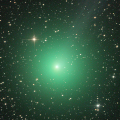
|
It brightened up to 3.7 mag and became a naked eye comet in mid January (Jan. 13, Marek Biely). It is bright as 4.8 mag still now (Feb. 7, Marco Goiato). It keeps brightening even after the perihelion passage. However, it will be getting fainter gradually after this. In the Northern Hemisphere, it keeps observable in good condition after this until the comet fades out. It is not observable in the Southern Hemisphere.
Date(TT) R.A. (2000) Decl. Delta r Elong. m1 Best Time(A, h)
Feb. 7 2 2.61 43 56.0 0.887 1.296 87 5.0 20:36 (144, -4)
Feb. 14 1 49.08 48 8.9 1.023 1.310 81 5.3 20:27 (143,-11)
|
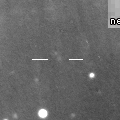
|
Now it is bright as 12.7 mag (Jan. 24, Chris Wyatt). It will brighten up to 8-9 mag in 2015 spring. In the Southern Hemisphere, it will be getting higher gradually after this. In the Northern Hemisphere, it keeps extremely low and hard to observe until June. It will be observable in good condition after June while the comet will be fading gradually.
Date(TT) R.A. (2000) Decl. Delta r Elong. m1 Best Time(A, h)
Feb. 7 18 26.67 -24 2.1 2.087 1.500 41 10.5 3:50 (286, 19)
Feb. 14 18 52.29 -23 53.0 2.032 1.470 42 10.2 4:00 (285, 22)
|
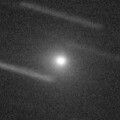
|
It brightened very rapidly in outburst up to 8.8 mag in mid December (Dec. 19, Marco Goiato). Then it faded down to 10.7 mag (Jan. 14, Chris Wyatt). However, it brightened in outburst again on Jan. 16, and brightened up to 7.0 mag (Jan. 17, Maik Meyer). Now it is 11.2 mag and diffuse (Feb. 7, Sandor Szabo). In the Northern Hemisphere, it will be geting higher gradually. In the Southern Hemisphere, it keeps locating extremely low after this.
Date(TT) R.A. (2000) Decl. Delta r Elong. m1 Best Time(A, h)
Feb. 7 0 28.22 6 35.8 1.466 1.149 51 10.5 20:36 (102, 5)
Feb. 14 0 57.23 10 11.5 1.515 1.203 52 11.0 20:27 (107, 5)
|
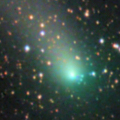
|
The brightness evolution has slowed down before the perihelion passage, and it faded down to 11.6 mag in late October (Oct. 26, Todd Augustyniak). However, an outburst occured around Nov. 10-12, and it brightened by 2 mag. It is bright as 10.9 mag still now (Jan. 24, Taras Prystavski). In the Northern Hemisphere, it will be observable in excellent condition after this while the comet will be fading. In the Southern Hemisphere, it is not observable until mid February.
Date(TT) R.A. (2000) Decl. Delta r Elong. m1 Best Time(A, h)
Feb. 7 18 5.61 14 49.9 2.389 2.026 56 11.5 3:50 (251, 2)
Feb. 14 18 4.73 18 8.5 2.340 2.093 63 11.6 4:00 (242, 7)
|
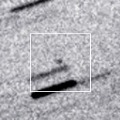
|
Now it is 16.0 mag (Dec. 22, Ken-ichi Kadota). It will brighten very rapidly, and will brighten up to 11 mag from January to February. In the Southern Hemisphere, it will be observable in the morning sky after February while the comet will be fading. It is hardly observable in the Northern Hemisphere.
Date(TT) R.A. (2000) Decl. Delta r Elong. m1 Best Time(A, h)
Feb. 7 19 37.10 -21 24.3 2.062 1.243 25 11.8 3:50 (293, 4)
Feb. 14 20 4.95 -21 39.9 2.063 1.252 25 12.0 4:00 (292, 6)
|

|
It brightened up to 6.9 mag in autumn (Oct. 17, Marco Goiato). Now it is fading. But it is bright as 11.6 mag still now (Jan. 17, Chris Wyatt). In the Northern Hemisphere, it keeps observable in the evening low sky until early February. It is getting lower also in the Southern Hemisphere, and will be unobservable temporarily in March. But it will be observable in good condition again after April.
Date(TT) R.A. (2000) Decl. Delta r Elong. m1 Best Time(A, h)
Feb. 7 0 12.32 -24 35.7 3.295 2.634 41 11.9 20:36 ( 73, 19)
Feb. 14 0 15.06 -23 24.3 3.449 2.715 36 12.1 20:27 ( 72, 15)
|
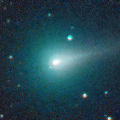
|
It brightened up to 10.6 mag from autumn to winter (Nov. 29, Seiichi Yoshida). Now it is 12.8 mag (Jan. 24, Chris Wyatt). It will be fading graudually after this. But it keeps observable for a long time until the comet fades out.
Date(TT) R.A. (2000) Decl. Delta r Elong. m1 Best Time(A, h)
Feb. 7 16 39.11 -13 35.1 1.887 1.768 67 12.9 3:50 (261, 36)
Feb. 14 16 52.06 -13 56.1 1.885 1.832 71 13.2 4:00 (258, 41)
|
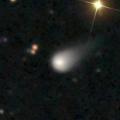
|
It brightened up to 13.6 mag until the end of 2014, brighter than originally expected (Dec. 19, Chris Wyatt). It is expected to brighten up to 4 mag from autumn to winter in 2015. Now it is not observable. In the Southern Hemisphere, it will be observable in good condition again after late March. In the Northern Hemisphere, it is hardly observable until 2015 December.
Date(TT) R.A. (2000) Decl. Delta r Elong. m1 Best Time(A, h)
Feb. 7 22 39.15 -23 12.2 4.978 4.065 20 13.1 20:36 ( 62, 1)
Feb. 14 22 43.02 -22 54.6 4.929 3.990 16 13.0 20:27 ( 60, -2)
|
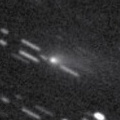
|
It brightened up to 2 mag by unusual major outburst in 2007. It brightened up to 12.6 mag in this apparition (June 25, Taras Prystavski). It faded down to 17-18 mag, but it suddenly brightened in outburst on Jan. 26. Now it is so bright as 13.2 mag (Jan. 29, Uwe Pilz). In the Northern Hemisphere, it keeps observable in good condition. In the Southern Hemisphere, it keeps extremely low.
Date(TT) R.A. (2000) Decl. Delta r Elong. m1 Best Time(A, h)
Feb. 7 4 10.42 41 16.6 2.567 3.041 109 13.7 20:36 (162, 11)
Feb. 14 4 15.38 40 29.3 2.684 3.071 103 14.1 20:27 (160, 11)
|
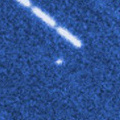
|
Now it is 15.1 mag (Feb. 1, Taras Prystavski). It will brighten up to 10.5 mag in 2015 spring. But the condition of this apparition is bad. It is already unobservable in the Northern Hemisphere. It will be unobservable in mid March also in the Southern Hemisphere. In the Northern Hemisphere, it will be observable after 2015 autumn while the comet will be fading.
Date(TT) R.A. (2000) Decl. Delta r Elong. m1 Best Time(A, h)
Feb. 7 23 33.42 -25 17.5 2.582 1.829 32 14.1 20:36 ( 68, 12)
Feb. 14 23 49.48 -22 50.2 2.563 1.782 30 13.8 20:27 ( 70, 10)
|
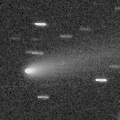
|
Now it is 13.8 mag (Jan. 20, Taras Prystavski). It is fainter than originally predicted by 2 mag. In the Northern Hemisphere, it keeps observable at 14 mag in excellent condition from 2014 summer to 2015 spring. It locates somewhat low in the Southern Hemisphere.
Date(TT) R.A. (2000) Decl. Delta r Elong. m1 Best Time(A, h)
Feb. 7 11 52.23 18 38.7 1.366 2.238 143 13.9 2:46 (180, 36)
Feb. 14 11 49.42 19 12.1 1.354 2.265 150 13.9 2:16 (180, 36)
|
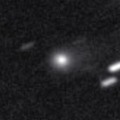
|
Now it is 14.5 mag (Jan. 20, Taras Prystavski). In 2015, it keeps 13 mag and will be observable in good condition for a long time.
Date(TT) R.A. (2000) Decl. Delta r Elong. m1 Best Time(A, h)
Feb. 7 17 54.23 -13 39.0 4.054 3.499 49 14.0 3:50 (273, 20)
Feb. 14 18 4.07 -13 29.1 3.971 3.490 54 13.9 4:00 (269, 26)
|

|
Outburst occured on Feb. 3, and it is bright as 13.8 mag (Richard Miles). It is getting higher gradually in the morning sky.
Date(TT) R.A. (2000) Decl. Delta r Elong. m1 Best Time(A, h)
Feb. 7 17 32.51 -30 27.8 6.599 6.071 53 14.0 3:50 (286, 33)
Feb. 14 17 37.21 -30 34.3 6.503 6.069 59 13.9 4:00 (283, 39)
|
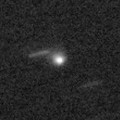
|
It will approach to the sun down to 0.3 a.u. in 2015 July, and it is expected to be bright. Now it is 15.6 mag (Jan. 13, Yasukazu Ikari). Hard to observe for a while after this. In the Southern Hemisphere, it will be observable after mid July in 2015, and keeps observable while the comet will be fading gradually. It will not be observable after this in the Northern Hemisphere.
Date(TT) R.A. (2000) Decl. Delta r Elong. m1 Best Time(A, h)
Feb. 7 23 18.23 -16 19.3 3.647 2.818 28 14.8 20:36 ( 73, 4)
Feb. 14 23 24.72 -15 0.3 3.599 2.722 23 14.6 20:27 ( 72, 1)
|
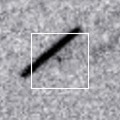
|
It will brighten up to 11 mag in spring. But the condition is bad in this apparition. In the Southern Hemisphere, it will become observable in the morning extremely low sky after late April. It will not be observable until late July in the Northern Hemisphere.
Date(TT) R.A. (2000) Decl. Delta r Elong. m1 Best Time(A, h)
Feb. 7 20 34.68 -14 40.7 2.343 1.388 11 15.1 3:50 (296,-10)
Feb. 14 20 59.50 -14 4.8 2.326 1.375 11 14.6 4:00 (294, -9)
|
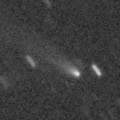
|
Now it is 14.6 mag (Jan. 21, Catalina Sky Survey). It will be observable at 14 mag in excellent condition in winter.
Date(TT) R.A. (2000) Decl. Delta r Elong. m1 Best Time(A, h)
Feb. 7 1 59.12 18 0.8 1.206 1.366 76 14.9 20:36 (125, 15)
Feb. 14 2 23.23 20 27.3 1.249 1.385 75 15.1 20:27 (128, 14)
|

|
It brightened up to 11-12 mag in 2012. It has already faded down to 15.5 mag (Jan. 17, Taras Prystavski). It keeps observable at 15 mag in good condition until 2015 summer.
Date(TT) R.A. (2000) Decl. Delta r Elong. m1 Best Time(A, h)
Feb. 7 11 51.69 -10 2.8 8.230 8.950 134 15.1 2:46 (180, 65)
Feb. 14 11 47.89 -9 48.1 8.185 8.988 142 15.1 2:15 (180, 65)
|
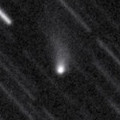
|
Now it is 15.3 mag (Jan. 17, Taras Prystavski). The brightness evolution is somewhat slow. It keeps 15-16 mag for a long time from 2014 autumn to 2015 autumn. In the Southern Hemisphere, it keeps observable in excellent condition for a long time. In the Northern Hemisphere, it is unobservable until 2015 June.
Date(TT) R.A. (2000) Decl. Delta r Elong. m1 Best Time(A, h)
Feb. 7 1 1.05 -53 46.0 2.374 2.018 57 15.2 20:36 ( 46, 38)
Feb. 14 0 56.26 -49 56.3 2.444 2.009 52 15.2 20:27 ( 49, 34)
|
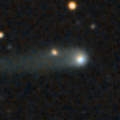
|
Now it is 14.5 mag (Dec. 24, Taras Prystavski). It keeps 15 mag for a long time from 2014 to 2015. It is observable in excellent condition in 2014 in the Southern Hemisphere, or in 2015 in the Northern Hemisphere. It becomes unobservable temporarily from March to May.
Date(TT) R.A. (2000) Decl. Delta r Elong. m1 Best Time(A, h)
Feb. 7 0 27.12 -7 30.8 4.509 3.894 46 15.2 20:36 ( 90, 13)
Feb. 14 0 31.45 -5 50.4 4.582 3.890 40 15.2 20:27 ( 89, 9)
|
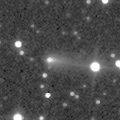
|
Now it is 14.2 mag (Jan. 13, Yasukazu Ikari. It keeps 15 mag until February, and it will be observable in excellent condition in the Northern Hemisphere. It locates somewhat low in the Southern Hemisphere.
Date(TT) R.A. (2000) Decl. Delta r Elong. m1 Best Time(A, h)
Feb. 7 6 19.50 22 36.3 1.683 2.495 136 15.2 21:11 (180, 32)
Feb. 14 6 19.23 22 3.5 1.752 2.501 129 15.4 20:43 (180, 33)
|

|
Now it is 15.5 mag (Jan. 16, Taras Prystavski). It will brighten up to 14 mag from 2015 to 2016. It is observable in good condition in the Southern Hemisphere. It locates somewhat low in the Northern Hemisphere.
Date(TT) R.A. (2000) Decl. Delta r Elong. m1 Best Time(A, h)
Feb. 7 2 53.58 -14 18.9 4.605 4.537 79 15.4 20:36 (107, 46)
Feb. 14 2 50.97 -12 55.3 4.696 4.515 73 15.4 20:27 (105, 41)
|

|
Now it is 14.5 mag (Nov. 19, Taras Prystavski). It will be observable at 15-16 mag in good condition again in 2015.
Date(TT) R.A. (2000) Decl. Delta r Elong. m1 Best Time(A, h)
Feb. 7 18 53.95 -16 17.2 8.121 7.337 35 15.5 3:50 (283, 10)
Feb. 14 18 55.86 -16 30.3 8.073 7.365 41 15.5 4:00 (279, 17)
|
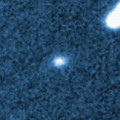
|
Brightening very rapidly. Now it is so bright as 14.3 mag (Jan. 26, T. Seki, S. Shimomoto). It keeps observable at 15 mag in good condition from winter to spring.
Date(TT) R.A. (2000) Decl. Delta r Elong. m1 Best Time(A, h)
Feb. 7 9 2.83 10 32.2 2.579 3.561 173 15.6 23:53 (180, 45)
Feb. 14 8 58.70 10 28.1 2.576 3.547 167 15.6 23:22 (180, 45)
|
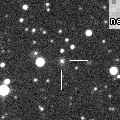
|
Now it is 15.3 mag (Jan. 24, Taras Prystavski). In the Northern Hemisphere, it keeps 15-16 mag and observable in excellent condition for a long time until early summer in 2015. It locates somewhat low in the Southern Hemisphere.
Date(TT) R.A. (2000) Decl. Delta r Elong. m1 Best Time(A, h)
Feb. 7 13 36.11 33 47.2 3.070 3.665 120 15.6 3:50 (189, 21)
Feb. 14 13 35.62 34 6.4 3.031 3.684 124 15.6 4:00 (180, 21)
|
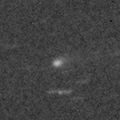
|
Now it is 15.7 mag (Jan. 17, Taras Prystavski). It will brighten up to 16 mag and will be observable in excellent condition in winter.
Date(TT) R.A. (2000) Decl. Delta r Elong. m1 Best Time(A, h)
Feb. 7 12 21.79 5 41.9 1.384 2.191 134 15.9 3:16 (180, 49)
Feb. 14 12 21.45 6 21.6 1.352 2.213 141 15.9 2:48 (180, 49)
|
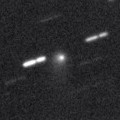
|
Now it is 15.8 mag (Jan. 11, Y. Sugiyama). It keeps observable at 15-16 mag for a long time from 2015 to 2016. In the Northern Hemisphere, it is observable in excellent condition. It locates somewhat low in the Southern Hemisphere.
Date(TT) R.A. (2000) Decl. Delta r Elong. m1 Best Time(A, h)
Feb. 7 2 55.24 29 28.3 5.369 5.497 92 16.1 20:36 (143, 14)
Feb. 14 2 55.70 29 56.7 5.467 5.480 85 16.1 20:27 (140, 11)
|

|
Now it is 15.6 mag (Jan. 19, Catalina Sky Survey). It will brighten up to 11 mag in 2015 autumn. In this apparition, it is observable until the highlight while the comet is brightening.
Date(TT) R.A. (2000) Decl. Delta r Elong. m1 Best Time(A, h)
Feb. 7 13 12.34 -2 0.9 2.159 2.787 120 16.3 3:50 (187, 57)
Feb. 14 13 13.87 -1 50.2 2.038 2.746 126 16.1 3:40 (180, 57)
|
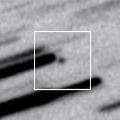
|
Now it is 16.6 mag (Jan. 29, Catalina Sky Survey). It will pass the perihelion on Mar. 15. In the Northern Hemispehre, it keeps observable in good condition until late February. In the Southern Hemisphere, it keeps observable until mid February, but it locates low.
Date(TT) R.A. (2000) Decl. Delta r Elong. m1 Best Time(A, h)
Feb. 7 1 8.09 8 15.3 0.892 0.959 61 16.2 20:36 (109, 12)
Feb. 14 1 4.33 6 2.0 0.886 0.832 52 16.1 20:27 (104, 9)
|
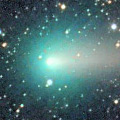
|
It brightened up to 6.5 mag in September (Sept. 21, Marco Goiato). Now it is fading. It has already faded down to 15.6 mag (Jan. 20, Taras Prystavski). It keeps observable in good condition after this, while the comet will be fading gradually.
Date(TT) R.A. (2000) Decl. Delta r Elong. m1 Best Time(A, h)
Feb. 7 15 51.31 5 39.8 2.267 2.378 84 16.1 3:50 (234, 32)
Feb. 14 15 45.01 7 56.8 2.222 2.472 92 16.3 4:00 (222, 37)
|
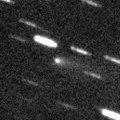
|
Now it is 14.7 mag (Jan. 20, Taras Prystavski). It keeps observable for a long time after this while the comet will be fading gradually.
Date(TT) R.A. (2000) Decl. Delta r Elong. m1 Best Time(A, h)
Feb. 7 9 33.81 2 11.9 1.844 2.812 166 16.1 0:29 (180, 53)
Feb. 14 9 27.79 2 57.6 1.880 2.854 168 16.2 23:50 (180, 52)
|

|
Now it is 15.7 mag (Jan. 16, Taras Prystavski). It will pass close to the earth from spring to summer in 2016, and it is expected to be observable at 6-7 mag in good condition. In the Northern Hemispehre, it keeps observable in good condition until 2015 spring when the comet will brighten up to 15.5 mag. In the Southern Hemisphere, it keeps low for a long time until 2016 spring.
Date(TT) R.A. (2000) Decl. Delta r Elong. m1 Best Time(A, h)
Feb. 7 5 6.98 35 52.6 4.781 5.349 120 16.2 20:36 (172, 19)
Feb. 14 5 1.05 35 33.7 4.829 5.285 112 16.2 20:27 (167, 18)
|

|
Now it is 17.4 mag (Jan. 18, Catalina Sky Survey). It is expected to brighten rapidly and will be observable in good condition at 13 mag from March to May.
Date(TT) R.A. (2000) Decl. Delta r Elong. m1 Best Time(A, h)
Feb. 7 14 1.20 -12 36.5 0.880 1.482 105 16.6 3:50 (217, 63)
Feb. 14 14 24.29 -14 12.3 0.800 1.435 106 16.2 4:00 (212, 66)
|

|
Now it is 17.5 mag (Jan. 11, F. Garcia). It will brighten up to 13 mag in 2016. In the Northern Hemisphere, it will be observable in excellent condition in this winter. It locates somewhat low in the Southern Hemisphere. It is fainter than this ephemeris recently.
Date(TT) R.A. (2000) Decl. Delta r Elong. m1 Best Time(A, h)
Feb. 7 5 42.38 27 59.9 2.365 3.075 128 16.4 20:36 (179, 27)
Feb. 14 5 41.13 27 51.7 2.421 3.049 120 16.3 20:27 (175, 27)
|
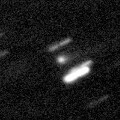
|
Now it is 15.4 mag (Jan 17, Mt. Lemmon Survey). It will brighten up to 16 mag in winter, and will be observable in excellent condition.
Date(TT) R.A. (2000) Decl. Delta r Elong. m1 Best Time(A, h)
Feb. 7 8 1.45 13 18.1 3.163 4.107 160 16.3 22:52 (180, 42)
Feb. 14 7 58.37 13 27.5 3.206 4.112 153 16.4 22:21 (180, 42)
|
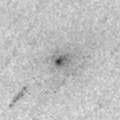
|
It brightened up to 15.4 mag in autumn (Nov. 19, Taras Prystavski). But it was extremely diffuse. It was reported so faint as 20 mag after December. It keeps observable in excellent condition in the Southern Hemisphere. But it locates low in the Northern Hemisphere.
Date(TT) R.A. (2000) Decl. Delta r Elong. m1 Best Time(A, h)
Feb. 7 8 51.17 -38 17.7 1.545 2.267 125 16.5 23:41 ( 0, 87)
Feb. 14 8 42.51 -38 59.3 1.601 2.319 125 16.7 23:05 ( 0, 86)
|
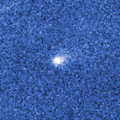
|
Now it is 15.8 mag (Jan. 2, Ken-ichi Kadota). It will be observable at 16-17 mag in good condition from winter to spring.
Date(TT) R.A. (2000) Decl. Delta r Elong. m1 Best Time(A, h)
Feb. 7 16 35.84 -11 8.1 2.128 2.001 69 16.7 3:50 (258, 35)
Feb. 14 16 49.13 -11 11.6 2.089 2.030 72 16.7 4:00 (254, 40)
|
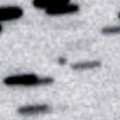
|
Now it is 16.4 mag (Jan. 20, Taras Prystavski). It keeps 17-18 mag for a long time from 2014 to 2016.
Date(TT) R.A. (2000) Decl. Delta r Elong. m1 Best Time(A, h)
Feb. 7 12 55.49 -23 47.5 4.857 5.340 114 16.9 3:50 (180, 79)
Feb. 14 12 48.22 -23 59.2 4.748 5.342 122 16.9 3:15 (180, 79)
|

|
Now it is 16.8 mag (Jan. 23, Catalina Sky Survey). It keeps 13 mag for a long time from 2015 to 2016, and will be observable in excellent condition in the Northern Hemisphere. In the Southern Hemisphere, it is observable only until mid 2015 March.
Date(TT) R.A. (2000) Decl. Delta r Elong. m1 Best Time(A, h)
Feb. 7 3 42.65 22 9.1 4.452 4.737 100 17.0 20:36 (148, 26)
Feb. 14 3 40.94 22 45.2 4.521 4.685 93 17.0 20:27 (144, 23)
|
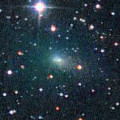
|
It brightened up to 13.3 mag in November (Nov. 19, Taras Prystavski). Now it is fading rapidly. It has already faded down to 16.2 mag (Jan. 25, J. L. Martin). It keeps observable in excellent condition in the Northern Hemisphere. It locates low in the Southern Hemisphere.
Date(TT) R.A. (2000) Decl. Delta r Elong. m1 Best Time(A, h)
Feb. 7 5 15.47 39 13.8 1.303 2.007 121 17.1 20:36 (174, 15)
Feb. 14 5 23.52 39 3.2 1.395 2.040 116 17.5 20:27 (172, 15)
|

|
Now it is 17.7 mag (Jan. 20, Taras Prystavski). It was observed at 17 mag in 2014 summer. In the Northern Hemisphere, it is observable at 17.5 mag in excellent condition also in 2015. It is not observable in the Southern Hemisphere.
Date(TT) R.A. (2000) Decl. Delta r Elong. m1 Best Time(A, h)
Feb. 7 19 44.28 33 11.7 4.421 3.921 53 17.2 3:50 (247,-27)
Feb. 14 19 56.19 34 4.1 4.427 3.933 54 17.2 4:00 (243,-23)
|
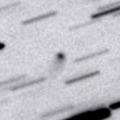
|
It keeps observable at 17-18 mag for a long time from 2013 to 2016. It keeps locating high in the Northern Hemisphere. It keeps locating very low in the Southern Hemipshere. No observations have been reported since 2014 November.
Date(TT) R.A. (2000) Decl. Delta r Elong. m1 Best Time(A, h)
Feb. 7 17 26.24 49 39.3 6.613 6.566 83 17.3 3:50 (218,-13)
Feb. 14 17 26.91 50 52.3 6.578 6.575 85 17.3 4:00 (213,-10)
|

|
Now it is 18.0 mag (Jan. 23, K. Hills). It keeps observable at 17 mag from winter to spring. It is observable in excellent condition in the Southern Hemisphere. But it locates somewhat low in the Northern Hemisphere.
Date(TT) R.A. (2000) Decl. Delta r Elong. m1 Best Time(A, h)
Feb. 7 11 39.61 -20 18.5 2.393 3.125 130 17.3 2:34 (180, 75)
Feb. 14 11 32.75 -22 16.4 2.330 3.118 136 17.3 2:00 (180, 77)
|

|
First return of a peculiar asteroid 1998 HO121. It keeps observable at 17-18 mag from 2015 to 2016.
Date(TT) R.A. (2000) Decl. Delta r Elong. m1 Best Time(A, h)
Feb. 7 6 54.81 7 49.9 2.337 3.184 143 17.3 21:46 (180, 47)
Feb. 14 6 53.04 8 22.5 2.375 3.168 136 17.4 21:16 (180, 47)
|
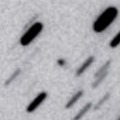
|
Now it is 17.8 mag (Jan. 6, B. Lutkenhoner). It was observed around 17-18 mag in early 2014. It will be observable around 17-18 mag again from 2014 autumn to 2015 spring, in excellent condition in the Northern Hemisphere. It is not observable in the Southern Hemisphere.
Date(TT) R.A. (2000) Decl. Delta r Elong. m1 Best Time(A, h)
Feb. 7 10 34.59 57 19.0 4.423 5.177 135 17.4 1:29 (180, -2)
Feb. 14 10 28.22 57 12.7 4.436 5.185 135 17.4 0:56 (180, -2)
|
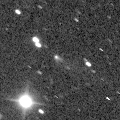
|
Now it is 17.2 mag (Jan. 10, Toshiyuki Takahashi). It was observed at 17 mag from 2013 to early 2014. It will be observable at 17.5 mag in good condition again from autumn to winter in 2014.
Date(TT) R.A. (2000) Decl. Delta r Elong. m1 Best Time(A, h)
Feb. 7 8 8.22 13 40.1 2.468 3.421 162 17.5 22:59 (180, 41)
Feb. 14 8 4.16 13 54.7 2.518 3.437 154 17.5 22:27 (180, 41)
|
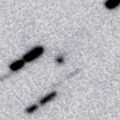
|
Now it is 17.6 mag (Jan. 22, A. Maury, J.-F. Soulier, J.-G. Bosch, T. Noel). It keeps observable at 17 mag from spring to summer. It locates somewhat low in the Northern Hemisphere.
Date(TT) R.A. (2000) Decl. Delta r Elong. m1 Best Time(A, h)
Feb. 7 16 26.91 -28 1.4 3.368 3.141 68 17.6 3:50 (276, 45)
Feb. 14 16 35.74 -28 18.2 3.276 3.140 73 17.5 4:00 (273, 51)
|
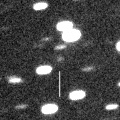
|
Now it is 17.6 mag (Jan. 21, Catalina Sky Survey). Now it is around the aphelion. In the Northern Hemisphere, it is observable at 18 mag in good condition from winter to spring. It locates somewhat low in the Southern Hemisphere.
Date(TT) R.A. (2000) Decl. Delta r Elong. m1 Best Time(A, h)
Feb. 7 8 52.12 28 41.6 3.643 4.604 165 17.6 23:42 (180, 26)
Feb. 14 8 47.30 28 58.5 3.659 4.594 158 17.6 23:10 (180, 26)
|
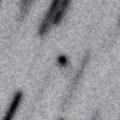
|
Now it is 16.3 mag (Jan. 27, F. Limon). It will be fading after this, and will be fainter than 18 mag in late February.
Date(TT) R.A. (2000) Decl. Delta r Elong. m1 Best Time(A, h)
Feb. 7 5 0.82 54 49.8 1.173 1.844 117 17.7 20:36 (174, 0)
Feb. 14 5 12.27 55 7.4 1.237 1.858 112 17.8 20:27 (173, -1)
|

|
Now it is 16.2 mag (Jan. 20, Taras Prystavski). It is observable at 17 mag until spring. It locates somewhat low in the Northern Hemisphere.
Date(TT) R.A. (2000) Decl. Delta r Elong. m1 Best Time(A, h)
Feb. 7 14 42.17 -10 57.6 1.155 1.596 96 17.8 3:50 (231, 56)
Feb. 14 14 58.38 -13 14.5 1.109 1.593 98 17.7 4:00 (226, 61)
|
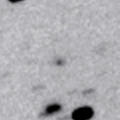
|
Now it is 18.8 mag (Dec. 20, K. Hills). It keeps 18 mag for a very long time from 2013 to 2018. It locates high in the Southern Hemisphere. But it locates somewhat low in the Northern Hemisphere.
Date(TT) R.A. (2000) Decl. Delta r Elong. m1 Best Time(A, h)
Feb. 7 12 22.22 -23 46.8 8.621 9.163 120 17.8 3:16 (180, 79)
Feb. 14 12 21.28 -23 50.8 8.529 9.161 127 17.8 2:48 (180, 79)
|
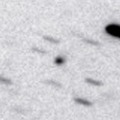
|
Now it is 17.0 mag (Dec. 30, Space Surveillance Telescope, Atom Site). It keeps 18 mag from 2014 to 2015. In 2015, it keeps observable in good condition from winter to spring.
Date(TT) R.A. (2000) Decl. Delta r Elong. m1 Best Time(A, h)
Feb. 7 10 52.07 -10 14.9 5.117 5.957 145 17.8 1:46 (180, 65)
Feb. 14 10 49.21 -10 31.1 5.079 5.968 151 17.8 1:16 (180, 66)
|
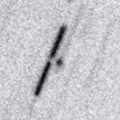
|
It was observed at 18 mag from spring to summer in 2014. In the Northern Hemisphere, it will be observable at 18 mag in good conditionn from winter to spring in 2015 again. It is not observable in the Southern Hemisphere.
Date(TT) R.A. (2000) Decl. Delta r Elong. m1 Best Time(A, h)
Feb. 7 15 38.49 54 22.4 4.043 4.324 99 17.9 3:50 (202, -6)
Feb. 14 15 35.60 57 1.7 4.001 4.328 102 17.9 4:00 (196, -5)
|
|
![]()
 (3200) Phaethon
(3200) Phaethon C/2013 V5 ( Oukaimeden )
C/2013 V5 ( Oukaimeden ) 4P/Faye
4P/Faye C/2013 X1 ( PanSTARRS )
C/2013 X1 ( PanSTARRS ) 218P/LINEAR
218P/LINEAR 116P/Wild 4
116P/Wild 4 269P/2012 R2 ( Jedicke )
269P/2012 R2 ( Jedicke ) C/2014 R4 ( Gibbs )
C/2014 R4 ( Gibbs ) 40P/Vaisala 1
40P/Vaisala 1 C/2013 G9 ( Tenagra )
C/2013 G9 ( Tenagra ) C/2014 W2 ( PanSTARRS )
C/2014 W2 ( PanSTARRS ) 108P/Ciffreo
108P/Ciffreo C/2013 G3 ( PanSTARRS )
C/2013 G3 ( PanSTARRS ) C/2012 K8 ( Lemmon )
C/2012 K8 ( Lemmon ) C/2014 W6 ( Catalina )
C/2014 W6 ( Catalina ) (347449) 2012 TW236
(347449) 2012 TW236 C/2013 U2 ( Holvorcem )
C/2013 U2 ( Holvorcem ) 119P/Parker-Hartley
119P/Parker-Hartley 299P/2014 D2 ( Catalina-PanSTARRS )
299P/2014 D2 ( Catalina-PanSTARRS ) 65P/Gunn
65P/Gunn P/2014 X1 ( Elenin )
P/2014 X1 ( Elenin ) C/2014 W9 ( PanSTARRS )
C/2014 W9 ( PanSTARRS ) C/2013 C2 ( Tenagra )
C/2013 C2 ( Tenagra ) C/2013 TW5 ( Spacewatch )
C/2013 TW5 ( Spacewatch ) C/2014 F2 ( Tenagra )
C/2014 F2 ( Tenagra )![]()













































